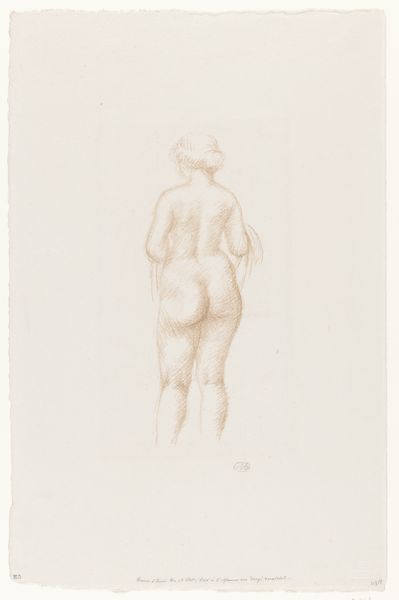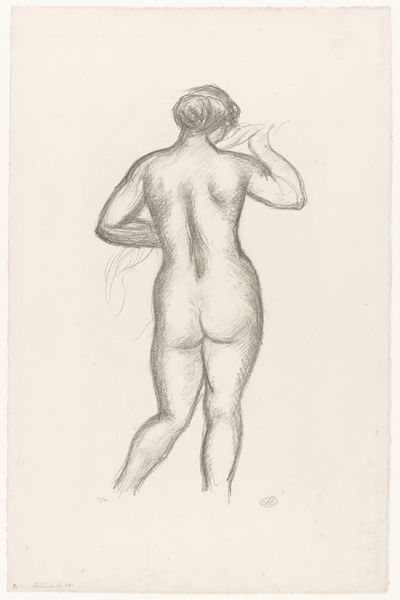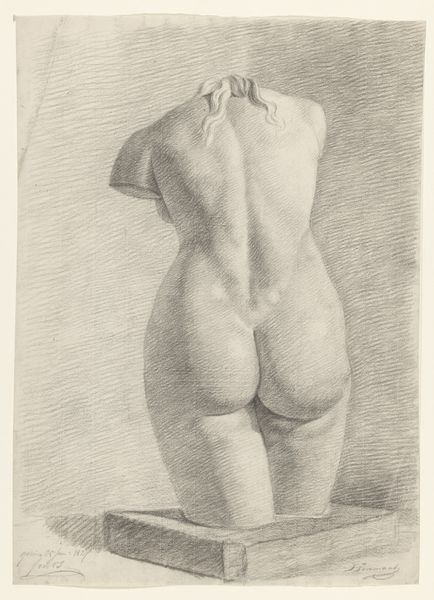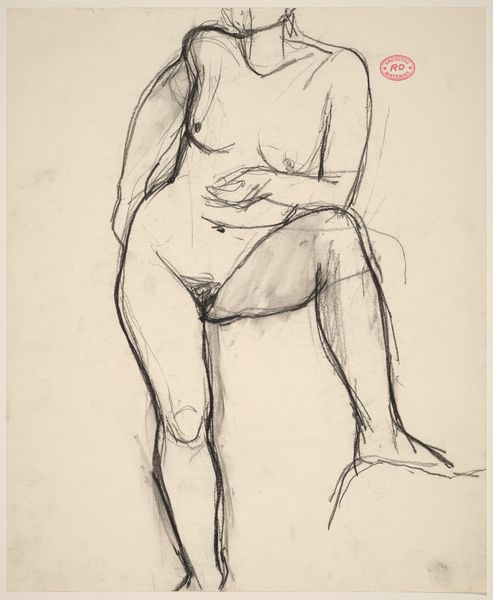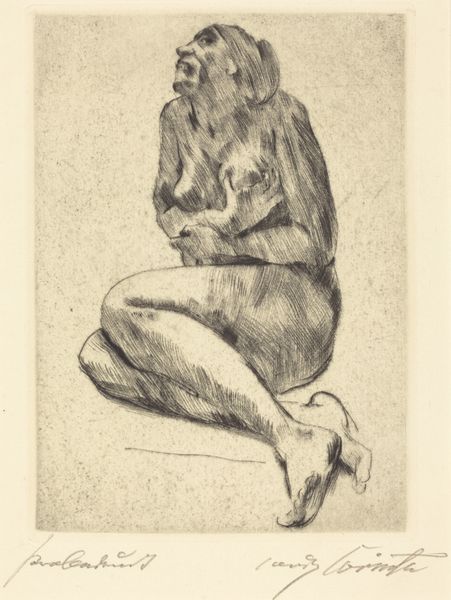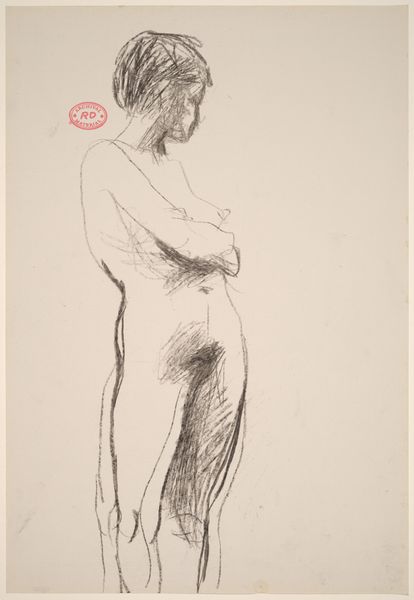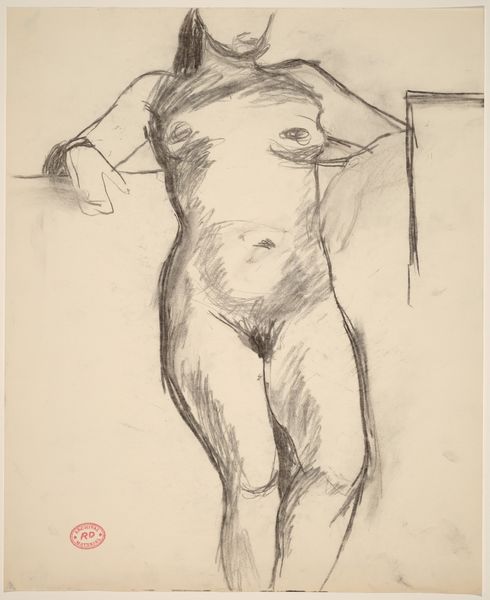
drawing, pencil
#
drawing
#
figuration
#
pencil drawing
#
pencil
#
academic-art
#
nude
#
realism
Dimensions: height 277 mm, width 225 mm
Copyright: Rijks Museum: Open Domain
Curator: Aristide Maillol's 1925 pencil drawing, "Hurkende naakte vrouw op de rug gezien"—"Squatting nude woman seen from the back"—offers a quietly intimate portrayal of the female form. What strikes you first about it? Editor: Hmm, the solidity of it. Even in pencil, there's a feeling of immense weight, a kind of groundedness, almost like she’s carved from stone rather than rendered in graphite. A very still moment of introspection, perhaps. Curator: Precisely! Maillol was primarily a sculptor, you know. You can certainly sense his sculptural sensibilities shaping the work on paper. The hatching technique contributes to that dimensionality; notice how the density of the pencil marks defines the planes of her back, the roundness of her thighs. Editor: Yes, and the deliberate blurring of some of the edges softens what might otherwise feel overly rigid or academic. Look at the slight fading around her hair—almost gives the piece a dreamy quality, as though this isn't just an objective study but also a moment captured from memory. The pose seems deceptively simple. Curator: Well, the squatting pose itself is ancient, isn’t it? Referencing classical statuary, of course, but also something profoundly human. Maillol stripped away ornamentation, reducing the form to its essentials, emphasizing the universality and timelessness of the female body. It isn’t idealized but is realistic, earthy… Editor: There is an awkwardness to it, isn't there? A raw truth, perhaps, that challenges those traditional notions of beauty. No artifice or theatrics. It feels like looking into a mirror that shows reality unadorned. Something refreshingly real, far removed from idealized and romanticized. It’s captivating. Curator: An astute observation. The drawing invites contemplation. By not revealing her face, Maillol compels us to consider the sheer weight and presence of the human form itself. And that, I think, remains profoundly compelling, decades on. Editor: Yes, a study in weight, light, and the very essence of being, really. It speaks volumes, despite its quiet, almost unassuming nature. What a discovery.
Comments
No comments
Be the first to comment and join the conversation on the ultimate creative platform.

